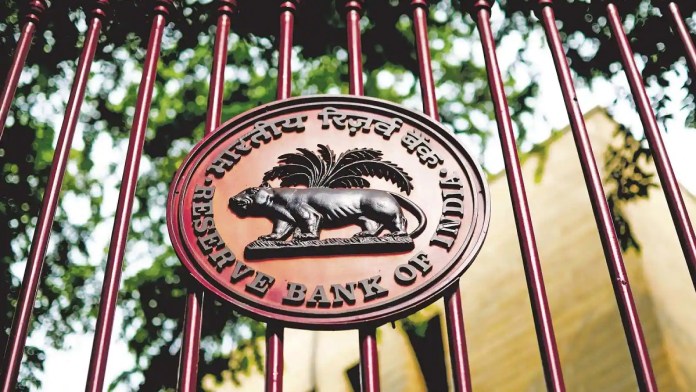India’s retail inflation, measured by the Consumer Price Index (CPI), fell to a three-month low of 6.77% in October, down from 7.41% in September, as seen in the RBI data released on 14 November. This is the 10th consecutive time that the CPI print has still come above the central bank’s upper margin of 6%. The RBI’s tolerance band is 2-6%. The union government has mandated the RBI to maintain retail inflation at 4% with a margin of 2% on either side for a five-year period ending March 2026, but the Monetary Policy Committee of the RBI has explained already why it could not meet the target in the last quarter.
Data released yesterday showed India’s annual wholesale price-based inflation (WPI) eased in October to 8.39% on-year, the lowest since March last year, helped by a fall in commodity prices. The October WPI inflation was lower than the Reuters forecast of 8.70% and 10.70% recorded in the previous month.
The food inflation, overall, accounting for nearly half the CPI basket, came in at 7.01% last month as against 8.60% in the preceding month. The retail inflation, which the RBI factors in while deciding its periodic monetary policy, was 4.48% in October last year.
The retail inflation rate in wheat almost doubled to 17.61% in October from an already elevated 9.59% in April. The case is almost the same with rice, the inflation rate in the price of which more than doubled to 10.21% from almost 4% in April.
Sector by sector, the factory output, calculated by the Index of Industrial Production (IIP), witnessed a growth of 3.1% in September, data earlier released by the Ministry of Statistics and Programme Implementation (MoSPI) showed. Data released last week showed that India’s industrial output surprised to the upside, expanding 3.1% year-on-year in September, following a 0.7% contraction in August.
Easing of overall inflation versus RBI response
“The dip in the CPI inflation to a sub-7% reading in October 2022 has offered relief, with the print only marginally exceeding expectations (6.7%) and recording a healthy sequential moderation from 7.4% in the previous month,” said Chief Economist at ICRA Aditi Nayar.
“A favourable base effect and a sequential downtick in the prices of fruits and oils and fats helped cool food and beverages inflation to 7.0% in October 2022, in spite of the impact of the unseasonal rainfall on vegetables,” Nayar said. She foresaw that with the CPI inflation remaining solidly above the MPC’s 6% tolerance level in October, another rate hike is certain in the Dec 2022 policy.
However, the quantum of the upcoming hike “is likely to be tempered to 35 bps, from the 50 bps seen in the last three reviews, given the moderation in CPI inflation in October and the expectations of a further dip in November”, the ICRA economist said. To put his statement in perspective, the RBI has raised its main repo rate by a cumulative 190 basis points since May to 5.90% to tame inflation.
Despite the easing of inflation, the central bank may deliver another 50 basis points to 6.40% by end-March, a Reuters poll predicts. The new agency, meanwhile, had conducted another economists’ opinion poll that had forecast the October CPI to come in between 6.40% to 7.35%, with a majority of respondents expecting a figure under 7.00%. The opinion gelled with a separate recent Reuters poll of economists, which forecast inflation would not reach the mid-point of the RBI’s target range, until at least 2025.
Apart from higher commodity prices, a weaker rupee, down around 9% for the year, is also adding to upward price pressures.
Energy prices, especially the costs of crude oil and natural gas, threaten to go up again in the backdrop of the Russia-Ukraine war, the West’s sanctions on Moscow, the difficulty these largest suppliers of foodgrains are facing while trying to export their agricultural produce and a struggling Chinese economy are external factors influencing inflation in India.
Aggregate easing hides price rise in crucial sectors
“While the decline in retail inflation is good news for the economy, continuous increase in cereals inflation does not augur well for the households at the bottom of the income pyramid, as they spend a disproportionately larger share of their income/ expenditure on food products. Cereals and product inflation has been in excess of 5% since March 2022 and in double digits in the past two months,” Sunil Sinha, the principal economist at India Ratings & Research, said.
Rajani Sinha, the chief economist at CareEdge said: “We expect the RBI to be less hawkish in its upcoming December policy meet and go for a 35-bps rate hike. Nonetheless, there is a need to closely monitor the impact of volatility in food inflation and the impact of exchange rate on imported inflation.”
“Factoring in the upside risk from food inflation, we have revised our inflation forecast for FY23 upwards to 6.8% (earlier 6.5%). We expect inflation to average 6.6% in the third quarter and 6.2% in the fourth quarter of this fiscal. CPI inflation could fall below 6% only by the end of this fiscal.”




You must log in to post a comment.